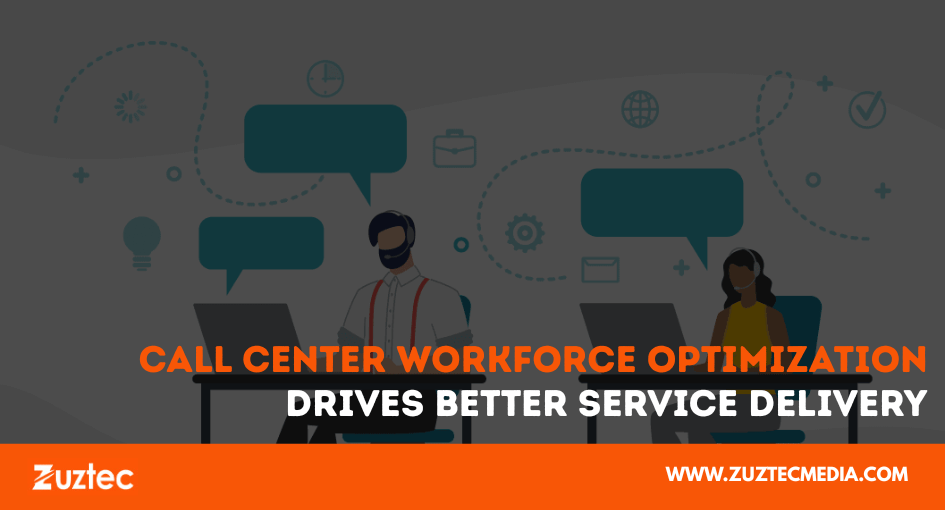
Call Center Workforce Optimization Drives Better Service Delivery
Efficient management of a call center depends on many moving parts—from agent performance to customer expectations and real-time data. One critical strategy that helps tie all these elements together is workforce optimization. It focuses on aligning staffing, scheduling, and performance analytics to create the most efficient service possible. For businesses looking to reduce costs and improve customer experience simultaneously, call center workforce optimization is becoming a central tactic.
Customers today expect personalized, timely support across different channels. With increasing volumes of interactions and evolving service standards, relying on guesswork or outdated methods doesn’t work anymore. Workforce optimization allows call centers to forecast demand, plan shift schedules, and measure individual and team productivity with precision. By doing so, companies can provide consistent support during peak hours without overstaffing during slower periods.
This strategy also benefits employees. When scheduling is based on accurate forecasting and skill alignment, agents are less likely to be overwhelmed or underutilized. Improved agent satisfaction leads to lower turnover, stronger performance, and better customer interactions. At the same time, management gains visibility into training needs, performance gaps, and real-time service levels—all of which can be addressed promptly.
This article will explain how workforce optimization works, its core components, and how to implement it effectively in a call center environment. As customer service continues to evolve, having a well-optimized team is key to staying ahead of expectations and competition.
Understanding Call Center Workforce Optimization
It is the process of strategically managing human resources to deliver high-quality service while minimizing costs. This includes forecasting call volumes, scheduling staff appropriately, monitoring performance, and using analytics to inform decisions. It is a data-driven approach that balances service quality with operational efficiency.
A successful workforce optimization strategy begins with accurate forecasting. By analyzing historical call data and current trends, managers can predict when customer demand will peak and plan staffing accordingly. This ensures that enough agents are available during busy times without the need to overstaff during quiet hours.
Next comes intelligent scheduling. Instead of static shifts, optimization tools use forecasting data to create flexible schedules tailored to agent availability and skill sets. This helps ensure that the right person is available at the right time to handle specific types of customer issues.
Performance monitoring is another critical element. Using real-time dashboards and metrics like average handle time, first-call resolution, and adherence to schedule, managers can continuously evaluate and improve agent effectiveness. These insights help identify coaching opportunities and recognize high performers.
When all these components work together, call centers can operate more smoothly, resolve issues faster, and improve both customer satisfaction and employee morale.
Benefits Of Effective Workforce Optimization
The primary benefit of call center workforce optimization is improved service delivery. When staffing aligns closely with customer demand, customers experience shorter wait times and more efficient resolutions. This directly contributes to higher customer satisfaction scores and better retention.
Another major advantage is cost efficiency. Overstaffing leads to unnecessary labor costs, while understaffing can result in missed calls, frustrated customers, and lost revenue. By forecasting accurately and adjusting staffing levels accordingly, businesses save money while still meeting service level agreements.
Workforce optimization also leads to more engaged and productive agents. When schedules are fair, workloads balanced, and goals clearly defined, employees tend to perform better and stay longer. This reduces turnover, which is often a significant cost factor in call center operations.
In the midbody of operations, these tools also support skill-based routing and performance tracking, helping to ensure that calls are matched to the best available agents. This not only improves resolution rates but also gives management insight into individual agent strengths and development areas.
Key Tools And Technologies In Workforce Optimization
Modern workforce optimization relies on software tools that gather, analyze, and present real-time data. Workforce management (WFM) systems are central to this process. They include features such as forecasting engines, scheduling modules, time tracking, and reporting dashboards.
Speech analytics and performance tracking tools also play a big role. These solutions analyze customer conversations to identify trends, agent behavior, and common pain points. This data helps managers develop training programs and improve scripts or processes.
By incorporating performance metrics into fun, competitive formats, companies can motivate employees to reach targets while building a positive work environment.
Integration with CRM and helpdesk platforms ensures that workforce optimization aligns with broader business goals. For example, if customer tickets increase due to a product issue, the system can flag the trend and recommend staffing adjustments.
Conclusion: Sustaining Long-Term Gains With Optimization
Companies that embrace call center workforce optimization position themselves for long-term success. This approach not only enhances day-to-day operations but also prepares teams to adapt quickly to shifts in customer expectations, technology, or service trends. In the conclusion of their strategy, businesses should continue refining their tools and processes based on ongoing performance data and feedback.
By investing in forecasting, scheduling, and analytics tools, organizations can maintain high service levels while keeping operational costs under control. This results in more satisfied customers, empowered employees, and a more agile service team overall. As competition in customer support intensifies, workforce optimization is no longer a luxury—it’s a necessity.

